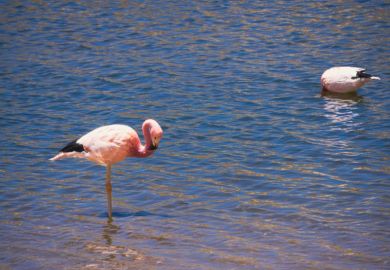Consider: a herbicide dispenser assembled from parts of a novel plant; building materials derived from bacterial biofilms; packaging that grows its own beneficially drinkable contents when you add water; and cheeses made by bacteria harvested from human skin. Some of these products of applied biology are imaginary (although not the cheese), but all can be aids to thought about technological futures.
This is the premise for a collection of essays derived from collaborations between the biotechnology avant-garde and a group of artists and designers interested in expanding our sense of what biology might achieve. They focus on synthetic biology (synbio to its friends), the latest incarnation of the ongoing project of turning our understanding of living systems into the ability to refashion them for our own ends. It proposes to extend, or possibly bypass, natural evolution, usually by modifying genes, perhaps eventually by creating new life from scratch with genetic codes tailored for new purposes. The new argument from the design community says that nature has produced many wonderful things through natural selection, but there is vastly greater scope for creating more now that engineers and technologists can bring human intentions to bear on living forms.
Synthetic Aesthetics opens with an introduction to these ambitions from two leading lights of synthetic biology, Drew Endy and Alistair Elfick, and then examines them from a range of sceptical but stimulating viewpoints. We come to see the many ways the project blurs boundaries between nature and culture, living things and machines, science, art and design, biological and technological evolution.
There is some repetition, as each of the artists and designers, and the commentators on their projects, offers definitions of synbio and position statements on its meaning, but also much provocative discussion of what kind of world a purposefully engineered nature might allow us to create. The aim is not academic rigour but food for thought. The book also exemplifies a pleasing contrast with previous episodes of public interest in the growing manipulative power of technologies emerging from the life sciences. In the earliest serious debates about the uses of genetic engineering in the late 1970s, centring on the introduction of the recombinant DNA techniques that used cutting and splicing enzymes to rearrange genes, opinion was pretty polarised. You were either broadly in favour of moving ahead into an era of designed genetic change, it seemed, or completely against it.
Now, the freewheeling, playful discussion that involves scientists, technologists, engineers, artists, “biohackers”, social commentators and activists of various stripes seems more nuanced. The art-engineering axis, in particular, seems to me to offer a richer range of options: other creative types can collaborate with gene-jockeys, question them, propose alternatives to their projects and on occasion subvert the ones that already exist, query their motives and potential effects constructively, or just make gentle fun of them.
One could see this as a new mode of co-option of critical voices, in which art projects can turn into advertisements for new technologies, and the contributors here acknowledge that possibility, too. There remains a sharp divide between routinising an engineering approach to living systems and opposing such an approach because it amounts to “playing God”. Certainly, the technologies now coming into play, descended from recombinant DNA techniques but more powerful and offering finer control than those available in the 1970s and 1980s, are as appealing to some as they remain disquieting to others. The science-art alliance won’t make the issues around the development of bioengineering any easier to resolve. But it does strike me as a good way to nourish debate about the kind of constructed worlds we are soon likely to be living in.
As Oron Catts and Ionat Zurr put it here: “We believe that artistic expressions that are…subtle and complex will be able to offer glimpses of the possible and the contestable; works that are neither utopic nor dystopic but rather ambiguous and messy.” Rightly, they invite us to see even radical futures as extensions of history.
Synthetic Aesthetics: Investigating Synthetic Biology’s Designs on Nature
By Alexandra Daisy Ginsberg, Jane Calvert, Pablo Schyfter, Alistair Elfick and Drew Endy
MIT Press, 368pp, £24.95
ISBN 9780262019996
Published 25 April 2014
Register to continue
Why register?
- Registration is free and only takes a moment
- Once registered, you can read 3 articles a month
- Sign up for our newsletter
Subscribe
Or subscribe for unlimited access to:
- Unlimited access to news, views, insights & reviews
- Digital editions
- Digital access to THE’s university and college rankings analysis
Already registered or a current subscriber?





